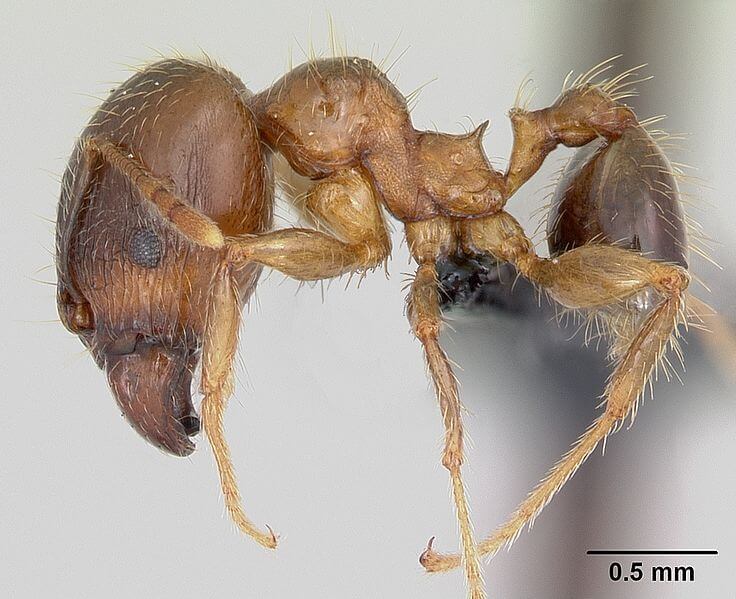African big-headed ant (Pheidole megacephala) - infestation update
African big-headed ants (ABHA) have been found within the settlement in March 2024, following previous efforts to control and eradicate the species from the Island.
The methods used to contain and control ABHA are well-established and have been previously employed with great effect on the Island. The LHIB are striving to eradicate the current infestation.
If you have recently noticed ants acting in an unusual way around your property, please bring a sample to the LHIB Administration Office or we can arrange for a sample to be taken.
How to identify an African big-headed ant
- Major (solider) workers are ginger-brown and have huge dark-coloured heads, almost half of the body size.
- Minor workers vary in colour from light to dark brown.
- Small (2-4mm).
- Aggressive and fast-moving/erratic.
- Most active in warm-dry conditions. ABHA are commonly found within and around infrastructure and any natural environment that they have been introduced to. They can nest anywhere, especially in lawns, tree cracks, crevices in paving or concrete, hollow logs, and pot plants.
- Nests are easily noticed as they actively mound soil, especially along concrete edges.
Ant identification guides can be picked up from the LHIB office front desk.

Photo: Philipp Hoenle
How to help
Help report any suspected occurrences around the Island. Please look around your lease for:
- Ant activity or nest mounds around your house or along the edge of the road.
- Ant activity around your bins.
- Ant activity underneath logs or around the base of trees.
If you suspect you have seen ABHA around the Island, take a picture or collect a sample if possible and report the sighting to the LHIB Biosecurity team ([email protected]; 02 6563 2066).
LHIB eradication response
LHIB Environment – Biosecurity team are being advised by Dr. Ben Hoffman of the Commonwealth Scientific and Industrial Research Organisation (CSIRO).
The following response will be carried out:
- Community information and feedback via householders.
- Delimiting surveys across the island to establish the extent of the infestation.
- Carry out a treatment of the ABHA using Amdro® Pro granular ant bait to control and contain the known infestation and newly occurring hotspots. It’s recommended that two treatments are carried out, three months apart.
- Post treatment monitoring and if necessary, re-treatment.
The damaging impacts of ABHA
Listed in the top 100 worst invasive pests in the world, ABHA are a major threat to biodiversity and ecosystems. They can readily out-compete and displace native invertebrates, especially other ant species.
The species is well-established on mainland Australia and will remain a threat to the Island for the foreseeable future, especially through the importation of plants, timber and building materials. Rainforest ecosystems are most at risk.
The ABHA is a sap-sucking insect, making it a pest in agricultural areas where they can damage fruit and plant roots directly. They can be a serious pest in buildings, forming large colonies where food scraps are available and can also cause damage to electrical items such as power points (CSIRO).
